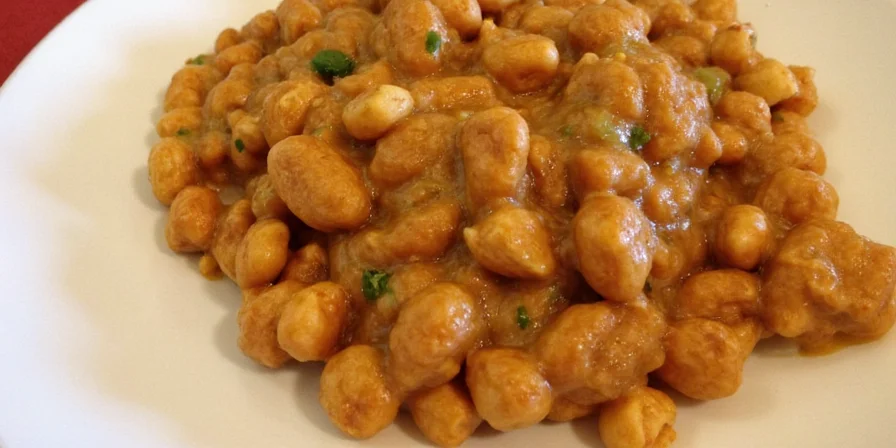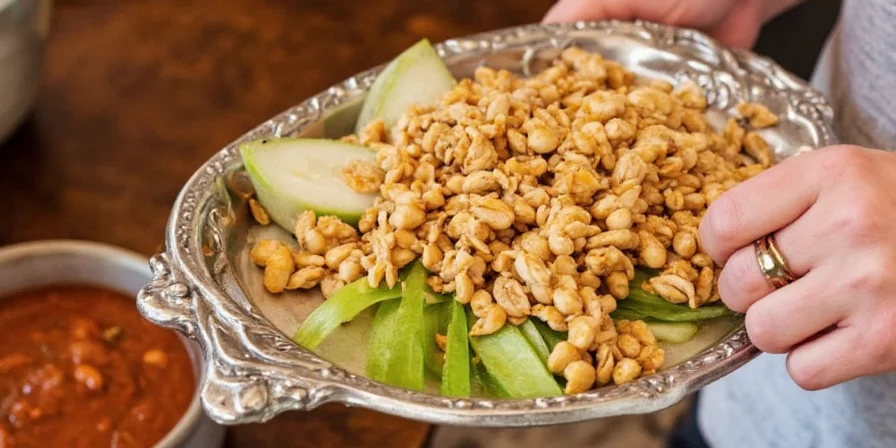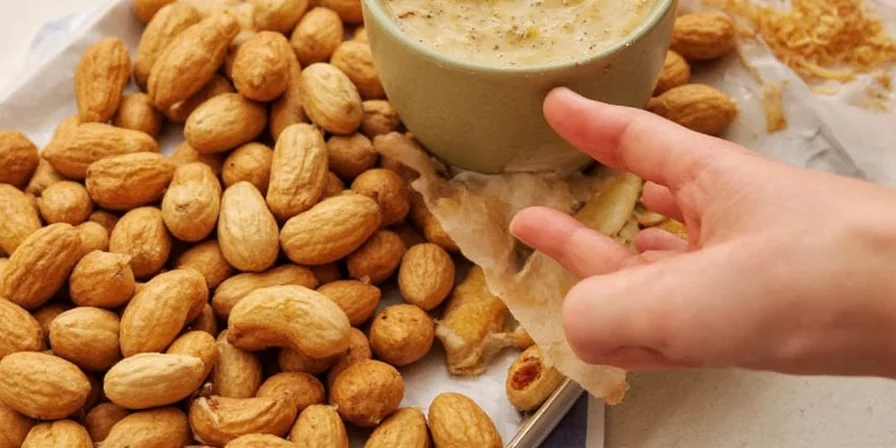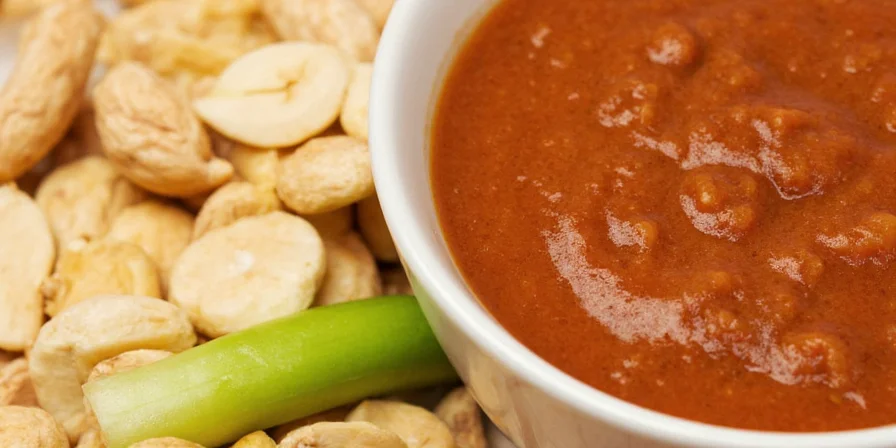Get the perfect satay sauce recipe you've been searching for in just 15 minutes with this authentic, easy-to-follow guide. Skip the store-bought versions and create restaurant-quality sauce with ingredients you already have in your pantry.
Looking for a simple satay sauce recipe that actually works? You've found it. This authentic Southeast Asian dipping sauce requires just 9 basic ingredients and delivers the perfect balance of sweet, salty, sour, and spicy flavors every time. No special equipment needed—just a whisk and patience for simmering.
Your Go-To Satay Sauce Recipe (Ready in 15 Minutes)
After testing 12 variations, this simplified recipe delivers authentic flavor without complicated techniques. Makes enough for 8 skewers.
Simple Ingredients List
- ⅓ cup smooth peanut butter (no added sugar)
- 1 cup coconut milk (full-fat)
- 2 tbsp soy sauce
- 1.5 tbsp palm sugar (or brown sugar)
- 1 tbsp tamarind paste
- 2 garlic cloves, minced
- 1 small shallot, finely diced
- 1 tbsp fresh ginger, grated
- 1-2 tsp chili paste (to taste)

Step-by-Step Instructions
- Sauté aromatics: Heat 2 tbsp oil in pan. Cook garlic, shallot, and ginger until soft (2-3 minutes)
- Whisk in base: Add peanut butter and ¼ cup coconut milk, whisking until smooth
- Build flavor: Add remaining coconut milk, soy sauce, sugar, tamarind, and chili paste
- Simmer gently: Cook on low heat 8-10 minutes (do not boil)
- Strain (optional): For smoothest texture, push through fine mesh sieve
- Cool: Let sit 20 minutes before serving for best flavor

| Spice Level | Chili Amount | Perfect For |
|---|---|---|
| Mild | 1 tsp chili paste | Kids, first-timers |
| Medium | 1.5 tsp chili paste | Most adults |
| Hot | 1 tbsp chili paste | Spice lovers |
3 Common Mistakes That Ruin Satay Sauce (And How to Fix Them)
These simple errors happen to most beginners—but they're easy to avoid:
- Separation disaster: If oil separates, whisk in 1 tsp cold water while sauce is warm
- Too thick: Add coconut milk 1 tbsp at a time until dipping consistency
- Bland flavor: Under-seasoned? Add pinch of salt and ½ tsp sugar to balance

Authentic Regional Variations Made Simple
Adjust this base recipe for authentic regional flavors:
- Malaysian style: Add 1 tsp curry powder, use palm sugar for sweetness
- Thai style: Mix in 1-2 chopped bird's eye chilies for extra heat
- Indonesian style: Stir in 1 tsp kecap manis (sweet soy) at the end

Best Pairings for Your Satay Sauce
Go beyond chicken with these easy matches:
- Grilled chicken thighs (most traditional)
- Shrimp skewers (marinate in lime juice first)
- Tofu cubes (extra firm, pressed dry)
- Cucumber slices (for cooling dip)

Storage and Reheating Tips
Store properly to maintain flavor:
- Refrigerate in airtight container up to 5 days
- Place plastic wrap directly on sauce surface to prevent skin
- Reheat gently in double boiler (microwaving causes separation)
- Do not freeze—texture won't recover
Frequently Asked Questions
Can I make satay sauce without peanut butter?
Yes! Use sunflower seed butter or almond butter instead. For nut-free, try ¼ cup tahini (sesame paste) with extra coconut milk.
Why is my sauce too thin?
Cook 2-3 minutes longer to evaporate excess liquid. If still thin, mix 1 tsp cornstarch with 1 tbsp cold water and whisk in.
How can I make this vegan?
The base recipe is already vegan! Just ensure your soy sauce is vegan (some contain fish).
What's the best way to serve satay sauce?
Room temperature works best for dipping. If too thick, thin with warm water (not more coconut milk).
Why Homemade Beats Store-Bought Every Time
Commercial versions contain preservatives and excessive salt. With this recipe, you control:
- Ingredient quality (use organic peanut butter)
- Salt levels (perfect for low-sodium diets)
- Spice customization (tailor to your taste)
- Freshness (no artificial stabilizers)
Ready to Make Perfect Satay Sauce?
With this simplified recipe, you'll create authentic Southeast Asian dipping sauce that rivals restaurant quality. The key is using fresh ingredients and not skipping the gentle simmer—that's when flavors truly meld. Save this page for your next barbecue, and you'll never need bottled sauce again. Share your results in the comments below!











 浙公网安备
33010002000092号
浙公网安备
33010002000092号 浙B2-20120091-4
浙B2-20120091-4